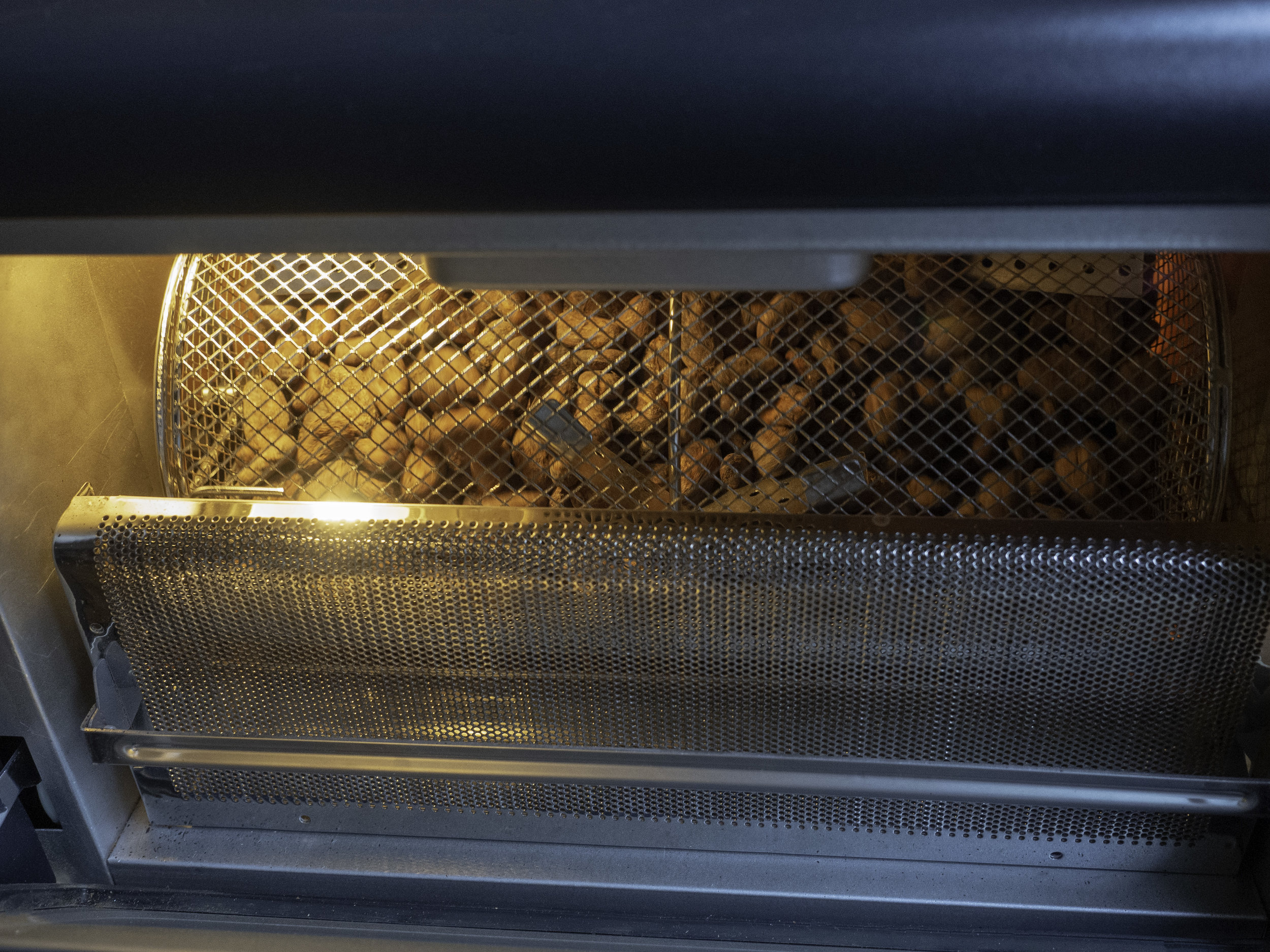Roasting
Roasting - my most favorite part in the whole chocolate making process. Why? The intriguing smell. Think homemade brownies freshly out of the oven.
But more to the details:
We roast in very small batches: 1135g or 2.5lb. The raw beans get roasted in coffee roasters and the principle is pretty straight forward:
A heating element is warming up the chamber
The drum with beans is spinning around for an even roast (always have to think about Döner or roasting chickens in a food truck).
The length of the roast and the program can be adjusted, according to the bean origin.
That’s how we roast, but let’s take a closer look what actually happens during roasting.
Benefits of roasting:
Killing microbial contaminations like salmonellae (check out the drying process and learn more about contamination).
Roasting makes the life of a chocolate maker easier, when separating the nibs from the husk.
Flavor development
Roasting is a complex process and various different reactions are happening at the same time. Fermentation built a lot of acids (like ethanoic acid) which can be unpleasant sour, bitter and astringent. We can remove these volatile acids when roasting and refining, which can improve the chocolate flavor at the end.
We want to get ride off some volatile acids, but keep or improve other chemicals naturally occurring in the cacao bean. During fermentation chocolate flavors have already been developed in a preliminary stage. The goal is to trigger chemical reactions ad adjust these chemicals to our taste.
The Maillard Reaction one important reaction we want to trigger.
To get the reaction going, we need:
heat (at least 150°C or 300°F )
sugar (carbohydrates or glucose in bean)
protein (aminoacides)
The reaction needs energy to start, that’s why we have to add heat in our case: roasting. The chemical reaction between protein and sugar leads to the desired caramelization process, which creates the typical sweet, nutty flavors and aromas.
Want to learn more about Maillard Reaction? Check out Wikipedia or this paper.

